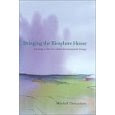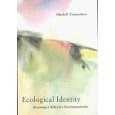
I was having dinner with Pete Hay, a wonderful Tasmanian writer and professor along with my son Jake who is studying photography at the University of Tasmania. Pete asked Jake why he was attracted to visit the "end of the earth." Jake remarked that Tasmania looked so compelling on his map of the world and then explained that when he arrived in Hobart, the air was so clear that he felt like he was viewing the world through binoculars.
Have a look at a map of the world and check out Tasmania. Notice its longitude. There is no other land at that longitude with the exception of a thin slice of Southern Chile. The "roaring forties" sweep through Tasmania, battering its Western edge with winds and rain. The rugged southwest is roadless and impenetrable rain forest. Many sections receive considerably more than one hundred inches of rain a year. However, the Eastern edge is in a rainshadow, receiving only twenty inches of rain. Hobart, the capital city, has a wonderful climate, and the Eastern shore is downright balmy.

Tasmania is a naturalist's dream. As part of a land mass that originally included Australia and New Zealand, its flora and fauna are relics of ancient Gondwanaland. For a North American, you've got a complex assortment of plant assemblages and species, most of which you've never previously encountered. The mammals are marsupials and monotremes and primarily nocturnal. And after you've seen a few of the cosmopolitan bird species (egrets and
cormorants), you're on your own. Further, Tasmania has been separated from mainland Australia for almost ten thousand years so their are unique microhabitat adaptations. As Tasmania is the most mountainous island in the world, their are dozens of topographical, climatic, and substrate variations, resulting in an intriguing biogeography.
Yet Tasmania is a fiercely contested landscape. The "wild and rugged" southwest is a world heritage area. But there is an ongoing and historical controversy regarding natural resource extraction, polluted landscapes, and misplaced dams. Much of Tasmania's landscape is currently threatened. Hence it is a compelling and vivid case study for the future of biodiversity, sustainability, and dwelling in place.





No comments:
Post a Comment